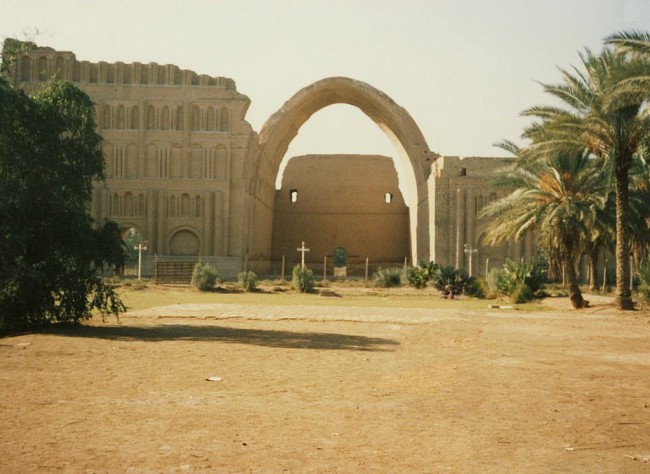
Even though Iraq is now devastated with sectarian conflicts, it has many ancient sites of powerful kingdoms that once flourished in the region. Six thousand years ago, a powerful ancient civilization called Mesopotamia emerged in the Iraqi region. Archaeologists claim that this civilization flourished along the Tigris and Euphrates rivers. It was the place where the first big cities were built and organized religions were created. The Middle Eastern nation has about 100,000 wonderful archaeological sites and could have been one of the most popular tourist destinations had there been no conflicts on its soil. Iraq is also the region where city of Babylon, an ancient world power, emerged. Below are some of the most important archaeological sites in the country:
Ezekiel’s tomb- Ezekiel is one of the Old Testament prophets in the Bible. According to the Bible, he preached to the Jews held in captivity under King Nebuchadnezzar, a powerful Babylonian king, in the sixth century B.C. In those ancient times, Nebuchadnezzar conquered many kingdoms and his influence stretched from Mesopotamia to the region of Syria. The tomb is located in the middle of the Iraqi town called Kifl, which was once Babylonia. This small town has been revered as a sacred place for centuries by both Jews and Muslims. A few decades ago, the town was a melting pot for the three major Abrahamic world religions-Islam, Christianity and Judaism. There are also alleged tombs of prophets Ezra in Azair, Daniel in Kirkuk and Jonah in what is today Mosul. Many find it difficult to believe that Christian holy places exist in a country like Iraq, where Islam is the state religion.
Erbil citadel town- Some of the best archaeological sites that prove that powerful ancient kingdoms existed in Iraq are found at Erbil region in the country. Erbil’s citadel is situated on top of an artificial mound that measures about 104 feet in height. It was settled more than 8000 years ago and has a plentiful supply of groundwater which sustained people who lived in the citadel. It has survived many sieges and fierce attacks. Though the Citadel Town of Erbil has gone through a number of changes over several millennia, it still has ancient architectural parts like its perimeter wall. It is now undergoing restoration supported by the United Nations cultural organization (UNESCO).
Arch at Ctesiphon- Archaeology experts believe that the construction of the arch at Ctesiphon began during the reign of Khosrau after a battle against the Byzantines in 540 AD. The arch is part of a Parthian palace erected in the sixth century in the great city of Ctesiphon. It is the largest known arch ever found in an archaeological site in the world and is made mostly of baked bricks. There are many other kingdoms that had similar arches in the country. However, none were as large as the arch at Ctesiphon.
Aqar Quf- Built about 3,500 years ago by the powerful King Kurigalzu, this ancient ziggurat is located near the modern day Abu Ghraib. King Kurigalzu belonged to the Kassite Dynasty and he built Dur Kurigalzu (“Fortress of Kurigalzu”), which became the seat of power over Mesopotamia and other kingdoms for more than 400 years. Today, the ziggurat is the only reminder of a city that had influence from Mesopotamia to the Caucasus region as far north as the Caspian Sea.
St. Matthew‘s Monastery, Nineveh- This archaeological site is located north of Mosul and is known as Dayr Sheikh Matti by locals. The monastery was built in the fourth century A.D at the side of a rugged mountain. According to archaeologists, this qualifies it as one of the oldest Christian sites in the world. The monastery was a major Christian institution that played an important role in the history of the Syrian Orthodox Church of the East. According to Mar Ignatius Jacob, the head of the Syriac church, the monastery was attacked by marauding Kurds, who killed the monks and stole the manuscripts in its magnificent library.
Though Iraq has a rich history of powerful kingdoms, which left it with a wealth of ancient archaeological sites in various regions in the country, it does not have a good tourism industry. It has had a difficult time building a tourism industry around these sites because they have been off limits due to the conflicts in the country. However, daring scholars, archaeologists, tourists and even Iraqis still visit the ancient archaeological sites in this region.
By Michael Obunga
Sources:
UNESCO
The New York Times
CNN
The New York Times ( A tour of Iraq’s Ancient Sites)



